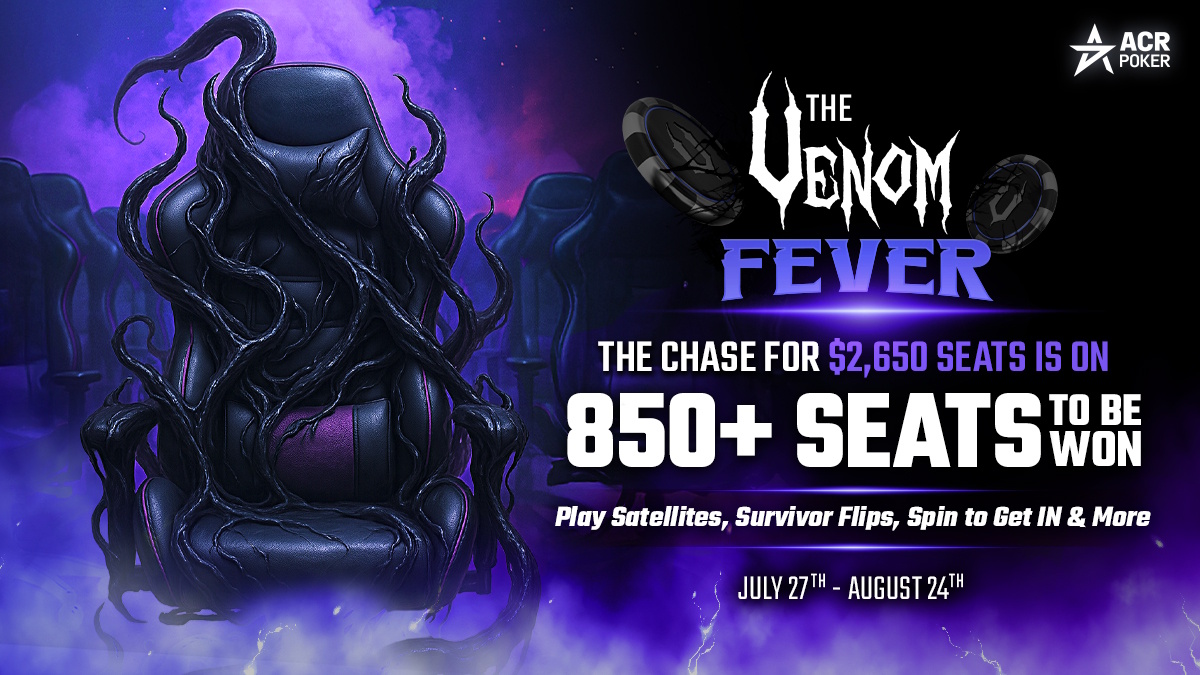Latest News
Tackling latency in next-gen gaming
Mathieu Duperré, CEO at Edgegap
Anyone that’s played a video game online has almost certainly experienced some kind of lag and connectivity issues. Despite huge infrastructure advances in the last few decades, latency remains a constant thorn in the side of gamers and detracts from the real-time experience that’s expected today.
Delivering a consistent experience to gamers playing on different devices with varying connection speeds – many of which are separated by thousands of miles – is a complex challenge. Massively popular online games like Roblox and Fortnite are just two of the many games which have benefited from years of investment into infrastructure in order to support millions of concurrent players. As the below chart from SuperJoost shows, multiplayer and online gaming is becoming the preferred way to play games amongst the most active gaming demographic, with all the technical challenges that this creates.
Games which can be played seamlessly across mobile, PC and console (so-called cross-play games) are also pushing the limits of what current internet infrastructure can deliver. Add in a new generation of streaming cloud gaming services like Stadia, Blacknut Games and Amazon’s Luna – plus Microsoft’s Game Pass and Sony’s revamped PlayStation Plus service, and you can see how the promise of console-quality performance over a broadband connection risks overloading networks that were never designed for this level of gaming.
So how can game companies, telcos and ISPs deliver on the performance promises being made to gamers? That’s where edge computing comes in.
Lag, latency and the Edge
When talking about latency it’s important to make it clear exactly what we mean. Latency refers to the amount of time it takes for game data to travel from one point to another. From the gamer’s perspective, it’s the delay between their command and seeing it happen in-game. How much latency a gamer experiences is dependent on the physical distance the data must cross through the multiple networks, routers and cables before it reaches its destination.
To use an extreme example, NASA’s Voyager 1 has made it about 14.5 billion miles from our planet so far, and it takes about 19 hours for its radio waves to reach us. Here on Earth, your latency is (hopefully) measured in milliseconds rather than hours; and gamers need around 30ms for the most optimal performance. Anywhere above 100ms can lead to noticeable lag and a frustrating experience.
This is where Edge computing comes in. As the name implies, Edge computing brings computation and data storage closer to the sources of data, placing it on the edge of the network where the performance gain is the greatest. As you’d expect, reducing unnecessary travel drastically speeds up the process providing an almost lag-free experience.
More players equals more chance for latency to be a problem
In the early days of gaming, local, couch play was part and parcel of the gaming experience. Today, a game where hundreds or even thousands of players are in the same session is nothing out of the ordinary, and there are Battle Royale games now, a whole genre of games where a hundred or more players are whittled down to a single winner.
The sheer scale of some online games dwarfs many of the most popular streaming services. Whilst Netflix remains the most successful streaming video site with 222 million subscribers, kids game Roblox has 230 million active accounts and Fortnite has over 350 million registered players. So if we assume these games reflect a growing trend, the demand on server networks is only going to increase, and gaming companies will have to look for more innovative solutions to continue meeting demand.
Cross-Platform
The ability for gamers on different devices and platforms to play and compete together is becoming an increasingly common feature of AAA multiplayer games like Apex Legends, Fornite and Call of Duty. EA Sports recently confirmed that FIFA 23 will be joining other heavy hitters in exploring cross-platform play. Considering the large amount of games on the market, and the various game modes for each game, studios are looking at crossplay to increase the amount of players who can play together. One of the main driver is to lower matchmaking time and prevent players from having to wait hours before opponents are ready to play with them.
From a latency perspective, different infrastructure across platforms means lag and downtime are far more likely. When it comes to cross-play, studios can’t use P2P (peer-to-peer) since console vendors don’t support direct communication (i.e. an Xbox can’t communicate directly with a playstation). On top of that, P2P may be limited by player’s home network (restrictive natting for example). That’s why studios typically use relays in a handful of centralised locations. Relays are seen as cheaper than authoritative server. They although have large flaws like making it harder for studios to prevent cheating, which is becoming more and more important with Web3 & NFT. This causes higherlatency since traffic needs to travel longer distances between players. For example, when Apex Legends went cross-platform, players were inundated with frame rate drops, lags and glitches.
Edge computing allows studios to deploy cross-play games as close as possible to their players, significantly reducing latency. Which can negate some of the delay issues around differing platforms.
VR and the Metaverse
Despite hitting shelves in 2016, VR is only now slowly making its way into mainstream gaming. Advances in technology have gradually improved the user experience, while also bringing the price of hardware down and closer to the mass market – not to mention the metaverse bringing renewed attention to the tech. But latency issues still present a serious hurdle to wider adoption unless it’s addressed.
Latency impacts the player experience far more in VR than in traditional gaming as it completely disrupts the intended immersive experience. A 2020 research paper found latency of over 30-35ms in VR, had a significant impact on players’ enjoyment and immersion, which was far lower than acceptable margins on a controller. But when it comes to the metaverse, achieving this might not be enough. Latency between headset and player has to be sub 5ms to prevent motion sickness.
In a recent blog, Meta’s VP, Dan Rabinovitsj, explained that cloud-based video games require a latency of around 75–150ms, while some AAA video games with high graphical demand require sub 35ms. Comparatively, Rabinovitsj suggests metaverse applications would need to reduce latency to low double or even single digits.
For better or worse, we’ve seen glimpses of what the metaverse has to offer already. Decentraland’s metaverse fashion week gave major brands like Dolce & Gabbana an opportunity to showcase virtual versions of their products. But attending journalists reported that the event was fraught with lag and glitches.
Gamers are a fickle bunch, so early adopters will simply move back to other games and platforms if they have poor initial experiences. Google’s Stadia promised to revolutionise gaming, but its fate was sealed at launch as the platform simply couldn’t compete with its competitors’ latency. Today, Google has ‘deprioritised’ the platform in favour of other projects.
If the metaverse goes to plan, it should encompass a lot more than traditional gaming experiences. But if it’s going to live up to players’ lofty expectations, akin to Ready Player One, more thought needs to be given to scalable and optimised infrastructure.
Unlocking next-gen gaming
The pace at which modern gaming is evolving is astounding, making the components discussed here work lag-free and as players expect will be a huge undertaking, and even more so when developers attempt to bring them all together in the metaverse.
The issue of latency may be less headline-grabbing than virtual fashion shows, NFTs and Mark Zuckerberg’s slightly unsettling promotional video, but the ability to seamlessly stitch all of these elements together will be critical in making the metaverse live up to expectations, and therefore, to its success.
Latest News
COUNTDOWN BEGINS FOR ACR POKER’S MASSIVE DUAL VENOM TOURNEYS WITH $10 MILLION GUARANTEED AND HUGE BOUNTIES

$8 Million NLH and $2 Million PLO events start this weekend, with top bounty prizes of $500,000 and $200,000 respectively
ACR Poker is turning up the heat this Sunday with the return of its flagship Dual Venom tournaments, featuring a combined $10 million guaranteed and massive mystery bounties.
The action kicks off with the first of five Day 1 flights for the $8 million NLH and $2 million PLO Mystery Bounty Venoms, starting this Sunday at 12:05pm ET. Players can build momentum by combining their stacks ahead of Day 2 on Monday, August 25th at 1:05pm ET, where all remaining players will already be in the money. Those who make it to the Final Table will battle for the Venom titles on Tuesday, August 26th at 4:05pm ET.

Alongside massive guarantees, both events boast huge bounties. In the Venom NLH, knocking out just one opponent could unlock a top bounty of $500,000, with the tourney winner projected to take home around $600,000. The Venom PLO, which ties ACR Poker’s biggest Omaha tourney ever, offers a $200,000 top bounty and an estimated $200,000 top prize for the champion. Every knockout in both tourneys earns players a minimum bounty of $5,000.
“Big bounties, massive guarantees – the Dual Mystery Bounty Venom tourneys are coming in hot,” said ACR Pro Chris Moneymaker. “The action kicks off this Sunday, so don’t miss out. Satellites start at just $0, so players of all bankrolls can take a shot. Let’s make it a big one – see you at the tables.”
While the buy-in for both tournaments is $2,650, players can still qualify for much less. Hundreds of low-cost qualifiers are up for grabs starting from $0 via Venom Fever Satellites. Plus, the Venom Vault and the Poison Path offer players more chances to unlock $2,650 Venom tickets.
Fans can tune in to watch the Venom NLH Day 1A action on ACR Poker’s Twitch channel this Sunday, featuring ACR Pros Chris Moneymaker, Rob Kuhn and Jon Pardy. The Final Table live stream follows on Tuesday, August 26th.
For more Mystery Bounty action, players can join ACR Poker’s new Daily Mystery Bounty tournaments for a shot at Mystery Bounty Chests packed with surprise rewards, with top bounties worth up to 10% of the prize pool.
For further details on the Dual Venom tournaments and other promotions, visit ACRPoker.eu.
The post COUNTDOWN BEGINS FOR ACR POKER’S MASSIVE DUAL VENOM TOURNEYS WITH $10 MILLION GUARANTEED AND HUGE BOUNTIES appeared first on Gaming and Gambling Industry in the Americas.
Future of Online Casinos
Future of Online Casinos and Slots: Navigating Industry Trends in 2025

When it comes to online casino play, and indeed online gaming in general, there is no such thing as inertia. In fact, things change all the time as technology advances and consumers become ever more demanding and expectant.
The online gambling industry continues to evolve rapidly, driven by technological advancements, changing norms, and shifting player preferences. With a global industry such as this, leading rather than following can be worth millions.
In 2025, online casinos and slot games are more innovative and accessible than ever before. This article explores the latest industry trends, recent news, and what players and operators can expect in this dynamic landscape.
Of the many evolutions, the ability to play both non-paying games and real money options has been hugely significant. This creates a much larger demographic, or pool of potential players – both those who play for fun and those who wish to place wagers and play against other enthusiasts.
The online casino real money USA market, for example, has grown exponentially, as has the overall number of consumers now accessing online casino sites both here and around the world. Put another way, the online casino real money markets have taken an already multi-billion dollar industry to another fiscal level, and for players, the range of options and choices can only be trending in their favor.
Rapid Technological Advancements Fuel Innovation
One of the most significant drivers of change in the online casino sector is technology. Artificial intelligence (AI) and blockchain are transforming the way players experience and engage with casino games.
Artificial Intelligence Enhances User Experience
AI-powered personalization is now standard in many online platforms. Casinos utilize AI algorithms to analyze player behavior, providing tailored game recommendations and customized promotions.
This not only increases engagement but also improves player retention.
Blockchain and Cryptocurrencies Boost Security and Transparency
Blockchain’s decentralized nature enhances transaction security and transparency.
Several operators now accept cryptocurrencies like Bitcoin, Ethereum, and emerging altcoins, allowing for faster deposits and withdrawals with reduced fees. This shift caters to a growing demographic seeking privacy and efficiency.
Industry News: Global Market Expansion Continues for Online Casino Companies
Asia-Pacific: Growth and Gaming
The Asia-Pacific region shows promising growth, especially in countries like Japan and South Korea. With such large populations, this potential player pool can only be positive for the online casino creating community, and for the players themselves.
Continued Rise of Mobile Gaming
Mobile continues to dominate the online casino playing scene.
With high-quality apps and optimized websites, players can access their favorite slots anywhere, anytime. Again, the almost limitless number of online casino choices is helping drive this growth.
As well as this, and as the online gaming stats attest, we’ve seen massively increased accessibility thanks to so many game-friendly devices hitting the market. In such circumstances, it is hard to see how this growth could not continue.
2025 Mobile Slot Innovations
Recent releases feature multi-screen gameplay, augmented reality (AR) integration, and 5G connectivity, leading to faster load times and seamless experiences. The convenience has driven increased engagement among younger audiences in particular.
Growing Popularity of Live Dealer Games
Live dealer games bridge the gap between online play and land-based casinos. High-quality streams, real-time interaction, and professional dealers make this sector one of the fastest-growing.
Online Gaming Creating Coherent Communities
Such is the growth of the online casino and overall game-playing arena that an increasing number of global, as well as local, online gaming communities are starting to emerge.
From playing to offering tips, or even just sharing comments during the game itself, millions now use the online casino as a way to forge new friendships, creating an online gaming culture all of their own. These games appeal to players seeking both thrill and social interaction, and we’re seeing the birth of forums, chat sites, and all things game and online casino-related as a result.
Looking at the creation of online casino communities shows that this is so much more than just a casual pastime for millions; it is a cultural activity that transcends age, demographics, and geography. Indeed, some people take online casino gameplay very seriously, and that’s not a bad thing…
@slotslv Just two legends, one jackpot in sight
Future Outlook: What’s Next for Online Casinos and Slots?
Looking ahead, several developments are set to shape the industry further:
- Integration of AI and Big Data: Personalized gaming experiences will become more sophisticated.
- Continued Adoption of Blockchain: Cryptocurrencies will facilitate cross-border transactions and global accessibility.
- Enhanced Player Security: Biometric authentication and anti-fraud measures will improve safety.
Conclusion
The online casino and slots industry in 2025 and beyond is likely to be driven and marked by innovation, growth, accessibility, and even inclusivity. As technology continues to advance and markets expand, both players and operators must stay informed about the latest trends and best practices.
Embracing these changes will ensure a safe, engaging, and enjoyable gaming experience for all.
Put another way, the online casino landscape looks hugely positive for all involved. From developers to creators, players to proprietors, the online casino world looks to be growing and gathering even more pace, and I’d bet on that continuing.
The post Future of Online Casinos and Slots: Navigating Industry Trends in 2025 appeared first on Gaming and Gambling Industry in the Americas.
Conferences in Europe
Peter Schmeichel Returns as SBC Awards 2025 Host as Finalists Are Announced

SBC has officially announced the shortlisted nominees for the 12th edition of the SBC Awards, set to take place at Lisbon’s MEO Arena on Thursday, 18 September, the final day of SBC Summit 2025.
Celebrating excellence across the global betting and gaming industry, the ceremony will spotlight standout achievements from operators, industry leaders, and suppliers across a broad spectrum of sectors, including payments, marketing, and platform innovation.
This year’s edition has already broken records, with the highest number of nominations ever received across its 37 diverse categories, reflecting the industry’s growing commitment to delivering exceptional performance.
Leading the shortlist are Pragmatic Play and Sportradar, each earning seven nominations. Close contenders include BetConstruct and Betsson Group with six nominations apiece. Other standout nominees include Bragg Gaming, Campeon Gaming, Novibet, Playtech, and Top Bet, each securing five nominations.
Returning to co-host the ceremony is football legend Peter Schmeichel, former Manchester United goalkeeper and UEFA European Championship winner, who previously brought his trademark charisma to the stage in 2024.
The 2025 edition of the SBC Awards will also mark the first year without dedicated affiliate categories. Instead, SBC will host a dedicated and expanded Affiliate Leaders Awards on Wednesday, 17th September, at the same venue.
Commenting on the upcoming SBC Awards ceremony, Rasmus Sojmark, Founder and CEO of SBC, said: “This industry never stands still. New talent, ideas, and technologies are constantly changing the game. The SBC Awards are our way of recognising those who are making a real impact and giving the community a moment to celebrate together.”
In the operator categories, alongside Betsson Group’s notable six nominations, TotoGaming also stands out with four nominations, including Marketing Campaign of the Year and Innovation in Casino & Gaming Entertainment. Meanwhile, Kaizen Gaming and Campeón Gaming return to defend their titles in the Operator of the Year – Medium and Large categories, respectively.
The hotly contested Casino Operator of the Year category includes names such as LeoVegas, Bally’s, Codere Online, and Winbet. 1xBet, EstrelaBet, and Sportsbet.io are among the frontrunners for Sportsbook Operator of the Year.
In the operator and supplier categories, competition for Employer of the Year includes Alea, Flutter Entertainment, Parimatch, and Play’n GO, all aiming to take the crown from reigning champions SOFTSWISS. The Socially Responsible Initiative of the Year category features nominees such as Associação de Mulheres da Indústria do Gaming (AMIG), BGaming, EveryMatrix, and Pay4Fun.
The highly anticipated Leader of the Year award will be kept under wraps until the night, with nominees and the winner to be revealed live during the ceremony.
In the payments and compliance categories, Noda and payabl. lead the way with nominations in all three awards: Payment Solution of the Year, Payment Innovation of the Year, and Fraud & Compliance Solution of the Year. MiFinity, Monnet Payments, OKTO, Pay4Fun, Paysecure, and Trustly have also earned multiple nods across the categories.
The supplier categories, which will span 22 awards, will include several new additions this year, such as Aggregator of the Year and Crash Game of the Year.
Fast Track and BETBY will look to retain their titles in Acquisition & Retention Partner and Esports Supplier of the Year, respectively. Meanwhile, Delasport, Evolution, Evoplay, iGP, Optimove, and Spotlight Sports Group are among the fifteen companies competing for the Industry Innovation of the Year award.
Soft2Bet will return in pursuit of back-to-back wins for Innovation in Casino Entertainment and Innovation in Mobile, while Digitain will aim to defend its title as Sportsbook Supplier of the Year.
The sought-after Platform Provider of the Year award features a strong field of contenders, including EGT Digital, GiG, GR8 Tech, Sportingtech, and White Hat Gaming.
Continuing SBC’s commitment to shining a light on the future stars of the industry, the evening will once again feature four ‘Rising Star‘ awards: Rising Star in Casino, Rising Star in Sports Betting, Rising Star in Sports Betting Innovation / Software, and Rising Star in Casino Innovation / Software.
The post Peter Schmeichel Returns as SBC Awards 2025 Host as Finalists Are Announced appeared first on European Gaming Industry News.
-

 gaming3 years ago
gaming3 years agoODIN by 4Players: Immersive, state-of-the-art in-game audio launches into the next generation of gaming
-
EEG iGaming Directory8 years ago
iSoftBet continues to grow with new release Forest Mania
-
News7 years ago
Softbroke collaborates with Asia Live Tech for the expansion of the service line in the igaming market
-
News7 years ago
Super Bowl LIII: NFL Fans Can Bet on the #1 Sportsbook Review Site Betting-Super-Bowl.com, Providing Free Unbiased and Trusted News, Picks and Predictions
-
iGaming Industry8 years ago
Rick Meitzler appointed to the Indian Gaming Magazine Advisory Board for 2018
-
News7 years ago
REVEALED: Top eSports players set to earn $3.2 million in 2019
-
iGaming Industry8 years ago
French Senator raises Loot Boxes to France’s Gambling Regulator
-
News7 years ago
Exclusive Interview with Miklos Handa (Founder of the email marketing solutions, “MailMike.net”), speaker at Vienna International Gaming Expo 2018










